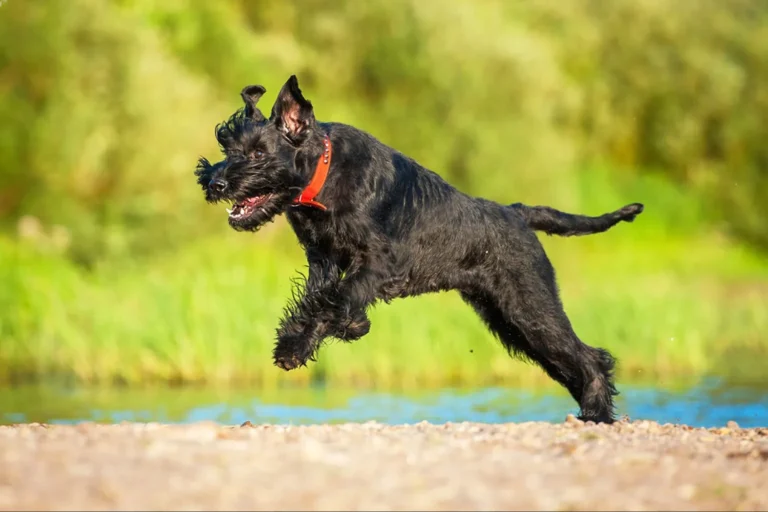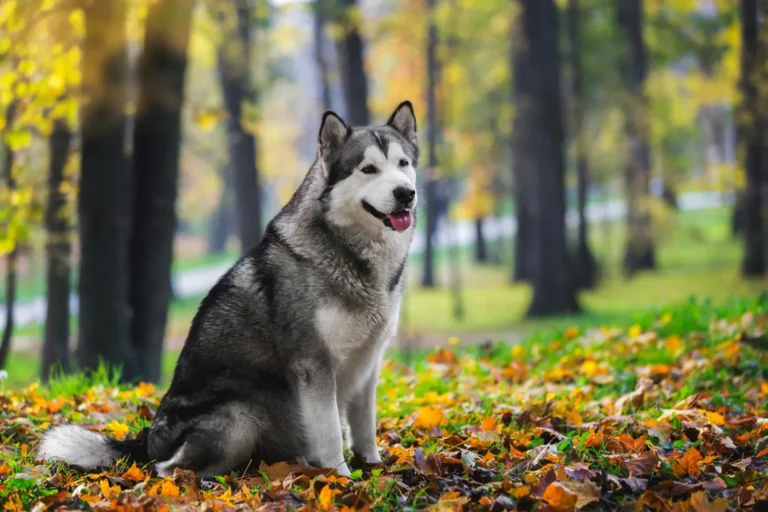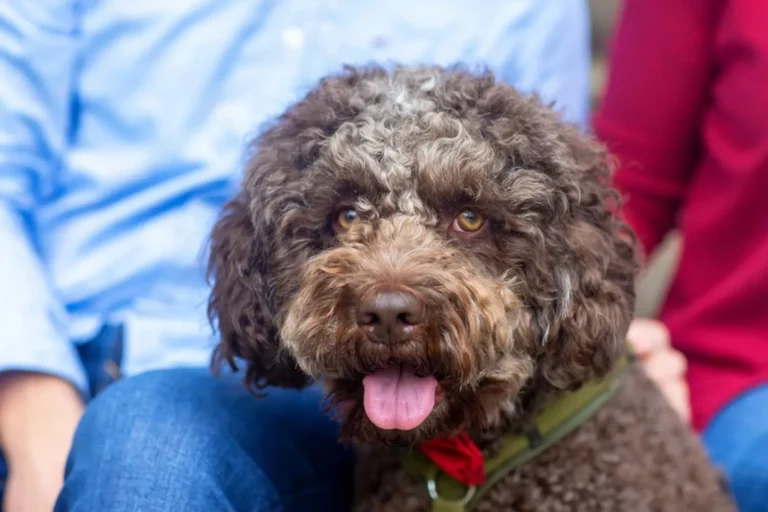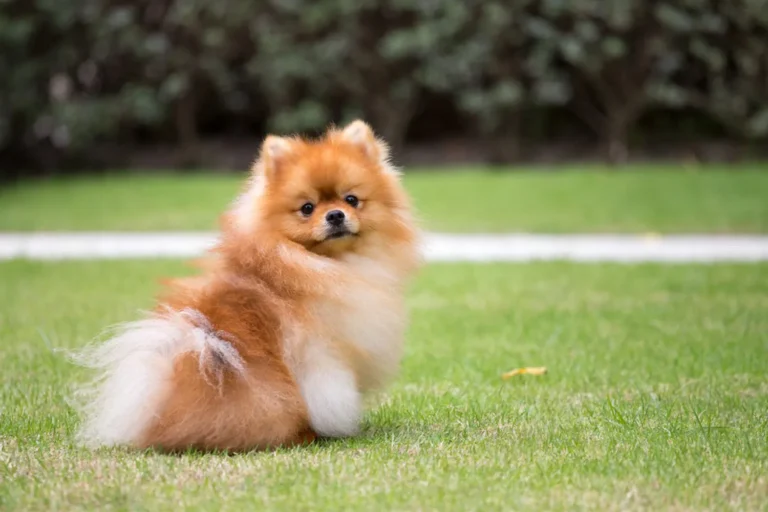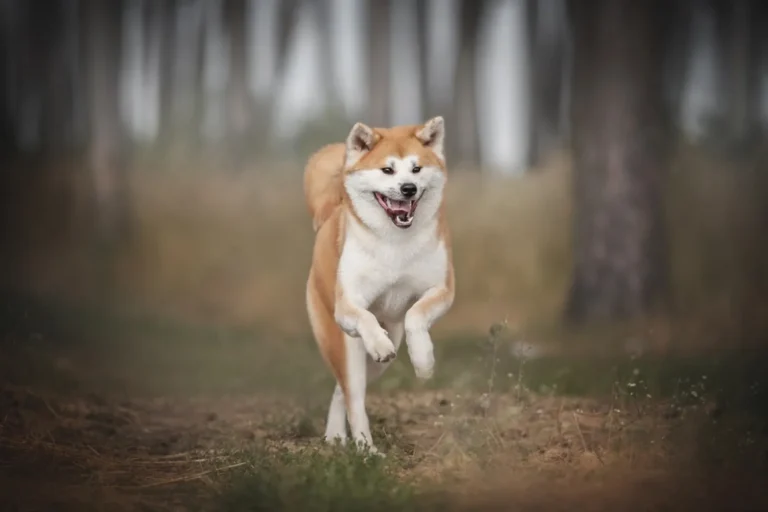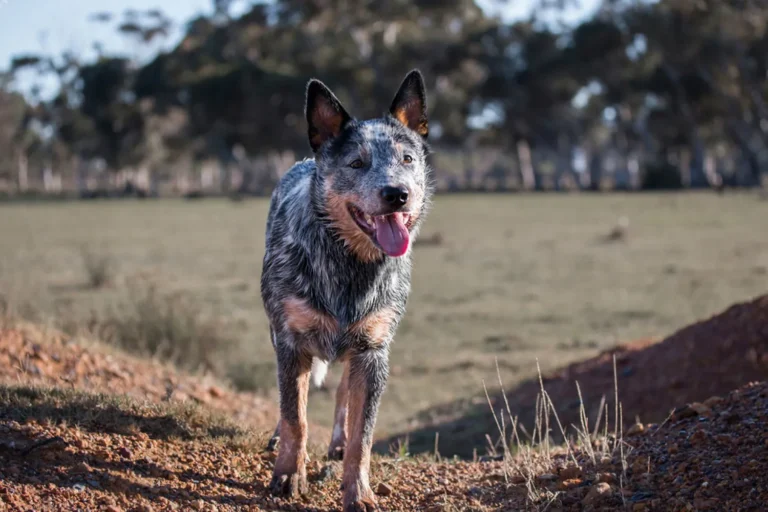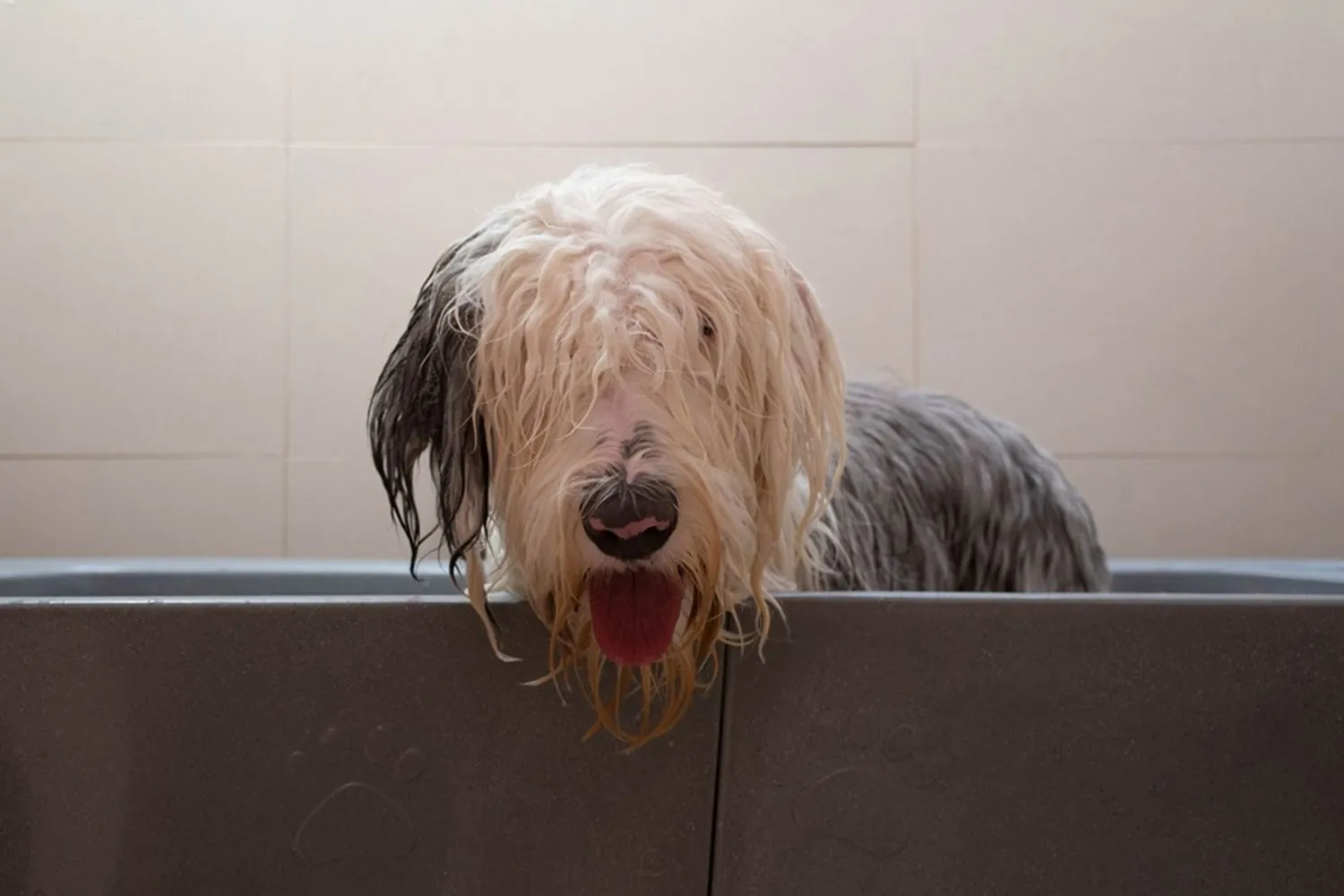
If you’re dreaming of a big, lovable goofball to complete your family, the Old English Sheepdog might be exactly who you’re picturing. One of the largest sheepdog breeds, they’re famously kind and gentle, with a playful streak that makes everyday life feel a little brighter. I once dog sat an Old English Sheepdog named Bertie who thought he was a lap dog nothing like a 70-pound fluffball sneaking onto your knees while you’re trying to drink coffee.
These shaggy charmers are wonderful with kids and usually get along well with other pets, thanks to their easygoing temperament. Just be ready for that herding instinct Bertie would gently nudge us toward the kitchen at dinnertime like it was his job. Plan on daily walks, some goofy playtime, and regular brushing to keep that beautiful coat happy. Start basic training early, keep it positive, and you’ll have a polite, affectionate family companion for years.
History and origin of the Old English Sheepdog
If you’ve ever watched an Old English Sheepdog bounding across a field, shaggy coat flying, it’s easy to imagine where this breed started out. While historians can’t pinpoint an exact beginning, most agree the Old English Sheepdog took shape in England in the 1800s, working alongside farmers and drovers. These weren’t just pasture sitters they helped drive livestock to market, muscling cattle and sheep down country lanes with steady, good natured determination.
That famous plush coat wasn’t for show. It’s a practical, weatherproof suit of armor designed to shrug off rain and cut the chill. A breeder I once chatted with in the north of England joked that brushing an Old English Sheepdog is like combing a cloud but she also showed me how the dense undercoat traps warmth while the outer hair sheds moisture. It makes perfect sense when you picture long days in damp fields and blustery winds.
Back in their working heyday, many had their tails docked not as a fashion choice, but to mark them as tax exempt farm dogs. That practice earned them the nickname “bobtail.” Today, tail docking is prohibited in many places, and you’ll often see these dogs proudly swishing full, fluffy tails.
The American Kennel Club recognized the breed in 1888, and over time the Old English Sheepdog trotted from farmyards into family rooms. I remember meeting one at a neighborhood picnic who appointed himself “kid wrangler,” gently circling the toddlers as if they were stray lambs. After real worries about the breed’s future around 2020, interest has been rising again, which makes my heart happy. If you bring one home, lean into their roots: give them a job herding games, trick training, even casual agility and keep that glorious coat well managed. Under all that fluff is a hardworking, steady soul who still loves to be useful.
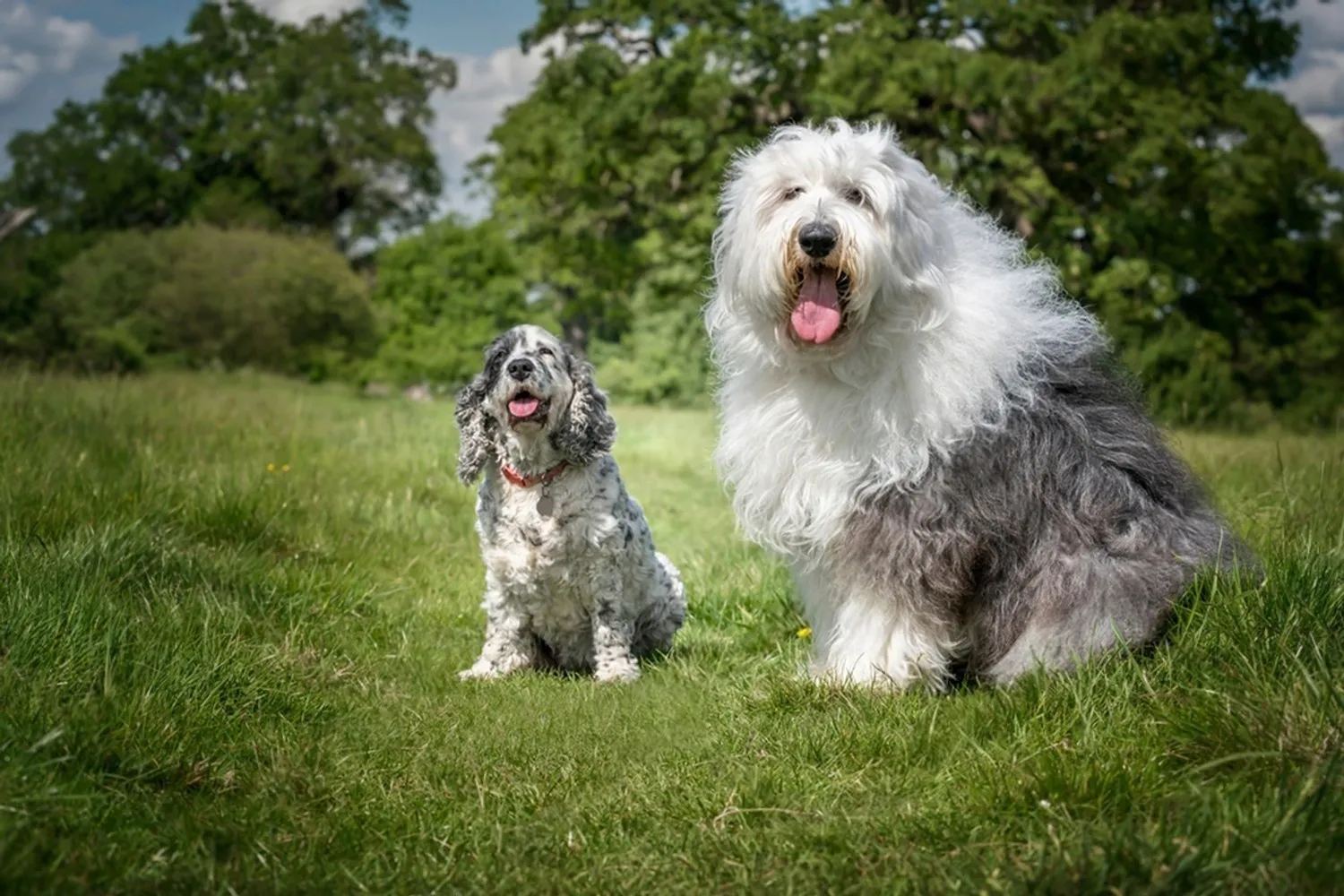
What Is the Old English Sheepdog?
Picture a big, shaggy companion who looks like a walking cloud and moves with a cheerful bounce that’s the Old English Sheepdog, or OES. Their signature coat is a proper double layered marvel: a soft, plush undercoat wrapped in a denser, protective outer layer. Colors range from soft grays to striking blue merle, with some dogs sporting bold white markings and others keeping things more subtle. I remember the first time I patted an OES after a brisk walk; it felt like sinking my hands into a warm wool sweater, then finding a sturdy raincoat on top.
Beneath all that fluff is a heart of gold. OES dogs are loving, animated, and famously enthusiastic especially when it’s time to head outside. One friend’s OES would practically sashay to the door the second he heard the leash jingle, and five minutes later he’d be herding our laughter as much as the tennis ball. They’re wonderful family companions if you’re ready to invest time in training and affection. My tip: channel that bright mind with short, fun training sessions. They’re clever, and when training feels like a game think hide and seek with toys or simple agility in the backyard they’ll shine. Early manners also help guide their herding instincts, so you get gentle nudges, not pushy “let me organize the kids” moments.
Now, about that coat. It’s gorgeous, and yes, it’s a commitment. Regular at home brushing plus frequent visits to a professional groomer keep things healthy and comfortable. I like to “line brush” in small sections while listening to a podcast it turns a chore into a ritual. A little detangling spray, a sturdy slicker brush, and patience go a long way. After rain or snow, I always towel off thoroughly and check behind ears, under the collar, and around the legs where mats sneak in. Pro tip: keep a mat by the door and a basket of towels nearby; it saves your floors and your sanity.
Historically, the OES comes from hardworking stock members of the herding group with roots in driving livestock and doing all sorts of farm jobs. Their size, intelligence, and agility made them naturals then, and those traits still define them today. Even as beloved pets, they thrive when they have a purpose: a challenging walk, a puzzle feeder, a game of fetch with a dash of obedience. I’ve seen an OES light up during a low key herding class, then snooze like a champion afterward.
They’re not a low maintenance breed, but their warm, spirited personality tends to win people over fast. If you’re up for grooming, training, and a daily dose of goofy charm, an Old English Sheepdog might just be your new favorite sidekick.
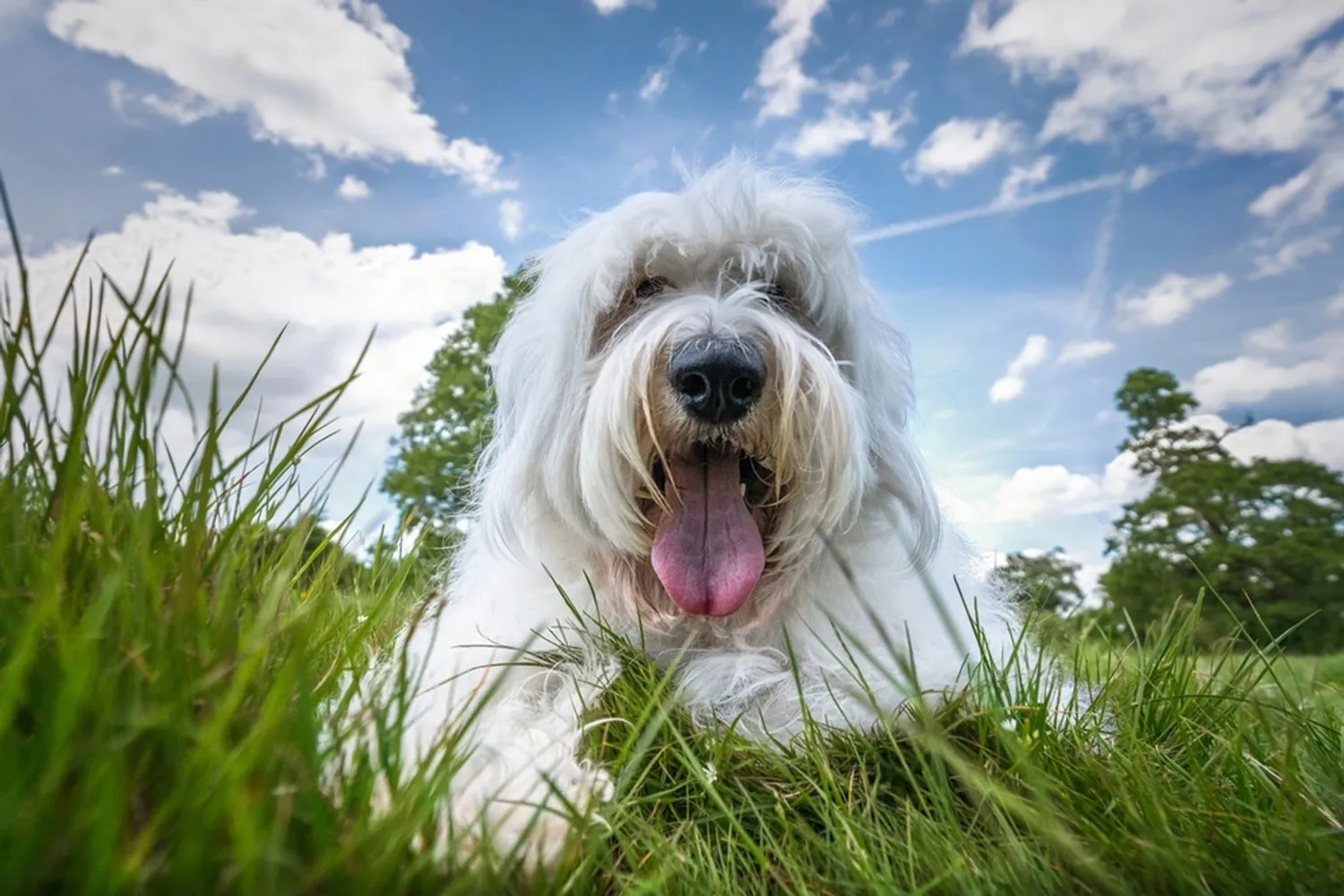
Who Is an Old English Sheepdog Best For?
If you’re the kind of person who doesn’t mind turning grooming into a relaxing ritual, an Old English Sheepdog might be your kind of happy chaos. That glorious shaggy coat needs regular upkeep think several brush throughs a week to prevent mats, plus the occasional trip to a groomer. I still remember helping a neighbor with her OES; we queued up a podcast and by the end of the episode, we had a silky, mat free fluffball and a pile of fur the size of a small pillow. A slicker brush and a sturdy metal comb are your best friends here, and a quick wipe of that “beard” after meals keeps things tidy.
Exercise wise, they’re moderate but steady. Plan on daily walks and some play about 45 to 60 minutes suits most mixed with mental workouts. They’re smart working dogs, so puzzle toys, scent games, and short training sessions go a long way. They do best with a firm, patient hand and clear boundaries. I’ve found three five minute training bursts beat one long session; they learn fast but also have a goofy sense of humor and will test you with it.
As for families, they’re loving companions, but their size and bouncy personality mean they’re usually a better fit for homes with older kids. A friend with teens takes her OES on weekend hikes, and it’s a perfect match. First time owners can succeed if they’re ready to learn, but these dogs generally shine with someone experienced who can offer routine, guidance, and time. If you’ve got the energy to train, the patience to brush, and a soft spot for a big hearted clown, an Old English Sheepdog will pay you back tenfold.
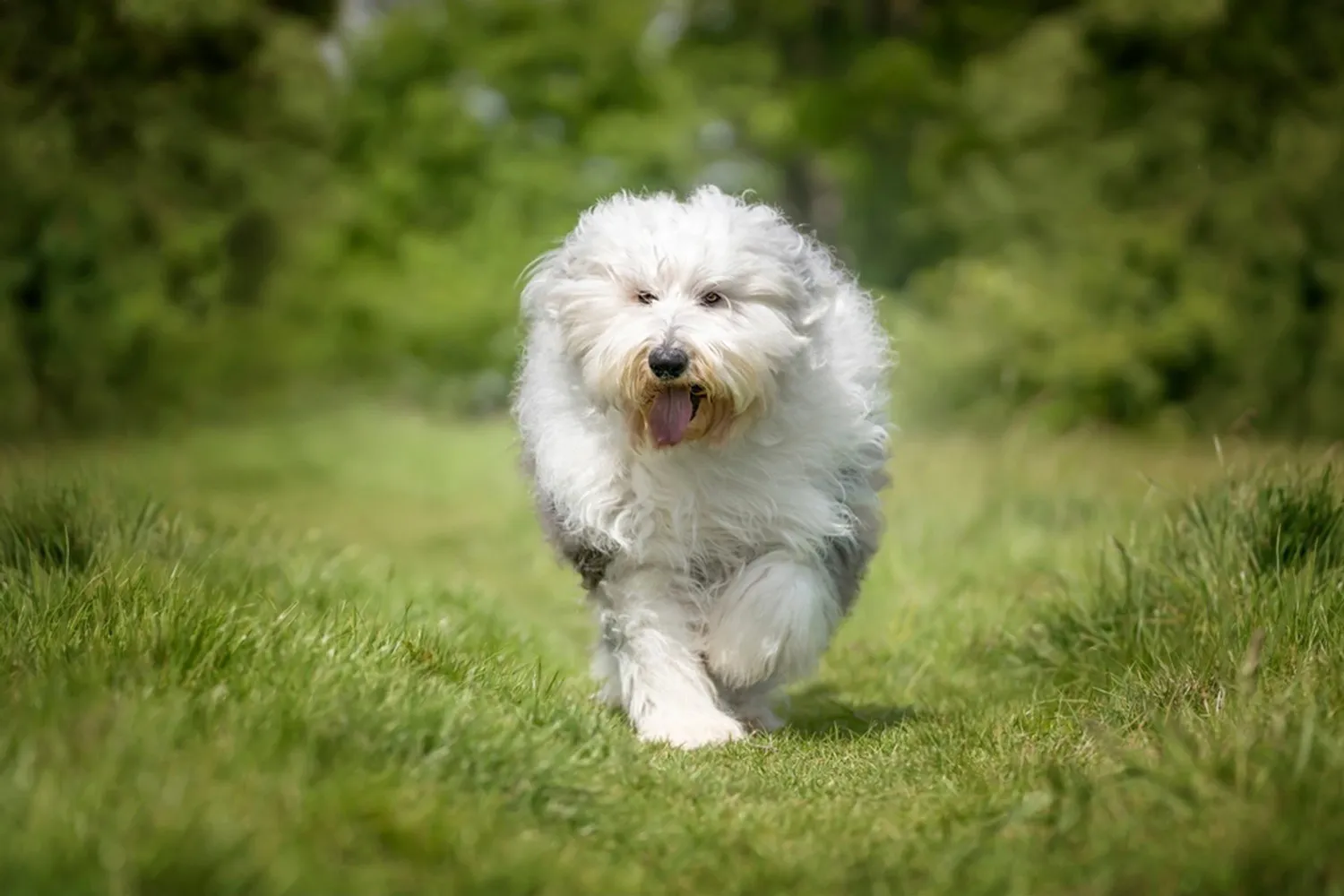
Old English Sheepdog Grooming and Shedding
These fluffy goofballs are as high maintenance as they are lovable. That beautiful, shaggy coat tangles if you so much as look at it the wrong way, so plan on daily brushing. I like to do a quick 10-15 minute “line brush” with a slicker and metal comb, working in small sections from the skin outward. Pay extra attention to the trouble spots: behind the ears, armpits, belly, and the area under the tail. A little detangling spray is your best friend. After muddy walks, I run my hands through the coat to fish out burrs before they become mats. Bathing every few weeks is fine, but make sure you dry thoroughly damp undercoats can cause skin issues. Keep nails trimmed and check ears regularly; a tidy trim around the eyes and paws helps them see and move comfortably.
Now, about shedding: expect fluff on your sofa, in your coffee, and mysteriously in your shoes especially during seasonal blowouts. When I dogsat an Old English Sheepdog named Molly, I vacuumed daily and still found little “sheep clouds” under the couch. Many owners opt for a shorter clip or full shear once or twice a year with a pro groomer, which can make upkeep far more manageable. Start grooming routines young, keep sessions upbeat with treats, and invest in a good brush, comb, and a sturdy lint roller. Your future self will thank you.
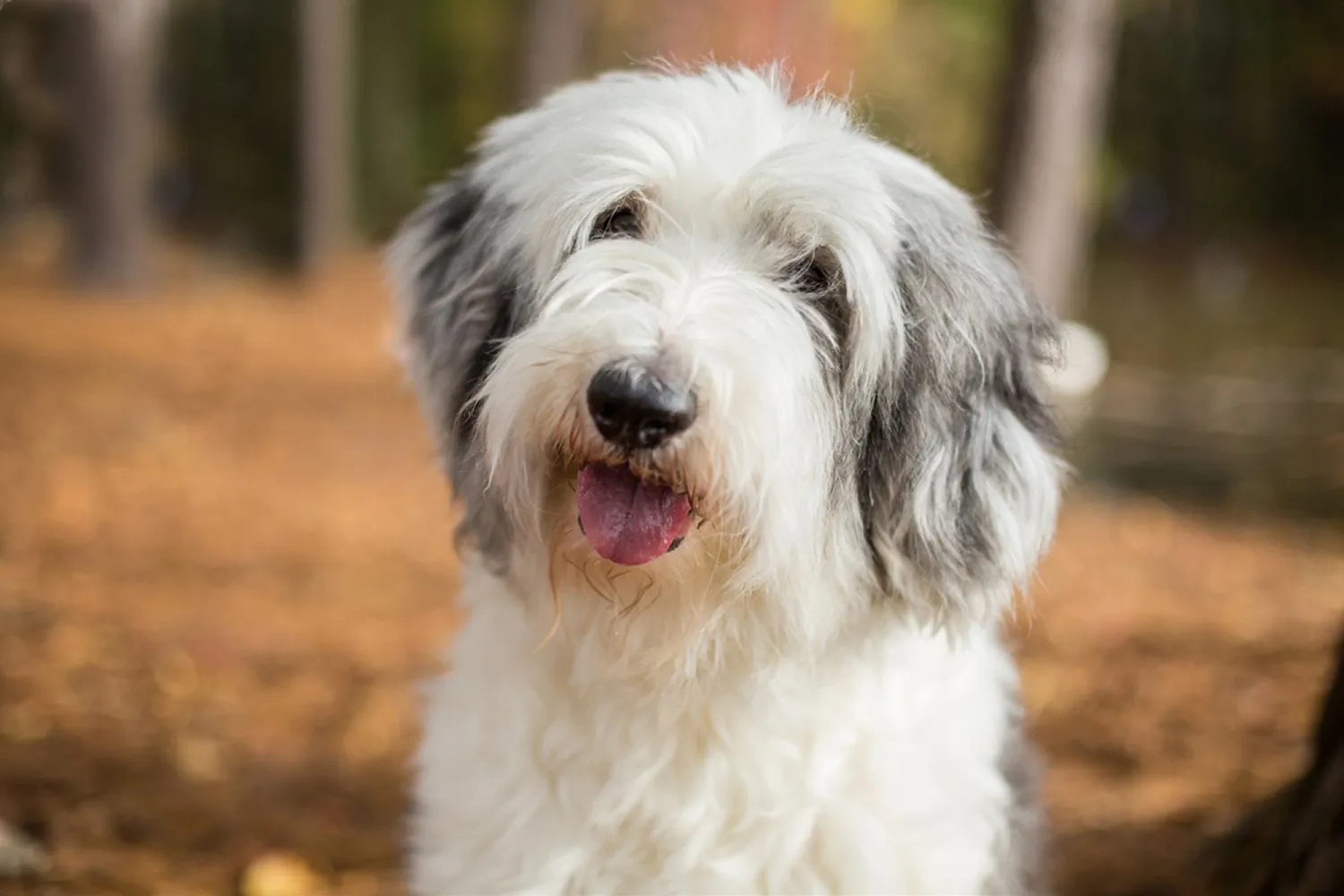
Do Old English Sheepdogs Bark a Lot?
Old English Sheepdogs have a big, ringing bark that you’ll recognize from a mile away deep, clear, and kind of charming when you’re not on a work call. The good news is their overall tendency to bark is moderate. They’re not constant chatterboxes, but they will announce visitors, suspicious trash cans, and the occasional squirrel committee meeting. Mine used to give three serious “boofs” at the front window as if he were filing an official report, then flop down satisfied. They make solid watchdogs without being nonstop noisemakers.
Training and routine make all the difference. Start early with a calm “quiet” cue and reward the instant silence happens even a half second counts at first. I like teaching “speak” too, because once a dog knows how to turn the voice on, it’s easier to teach how to turn it off. Keep them busy: these herding dogs are smart, and a bored brain will invent reasons to yell. Daily exercise, food puzzles, and a quick sniffy walk after dinner worked wonders for us. If fence line barking is a thing, interrupt gently, redirect to a sit or a toy, and pay for the calm. Don’t accidentally reward the bark by rushing to the door every time; wait for a beat of quiet before opening it.
Apartment life can work if you plan ahead. Their bark carries, so do a bit of doorbell and hallway noise practice play the sounds softly, treat for calm, and build up. I once left a bag of treats by the entry for the delivery folks; a quiet toss and a cheerful hello turned my dog from “security guard” into “greeter.” With steady training and enough mental and physical outlets, you shouldn’t expect excessive barking just the occasional proud announcement from that shaggy town crier.
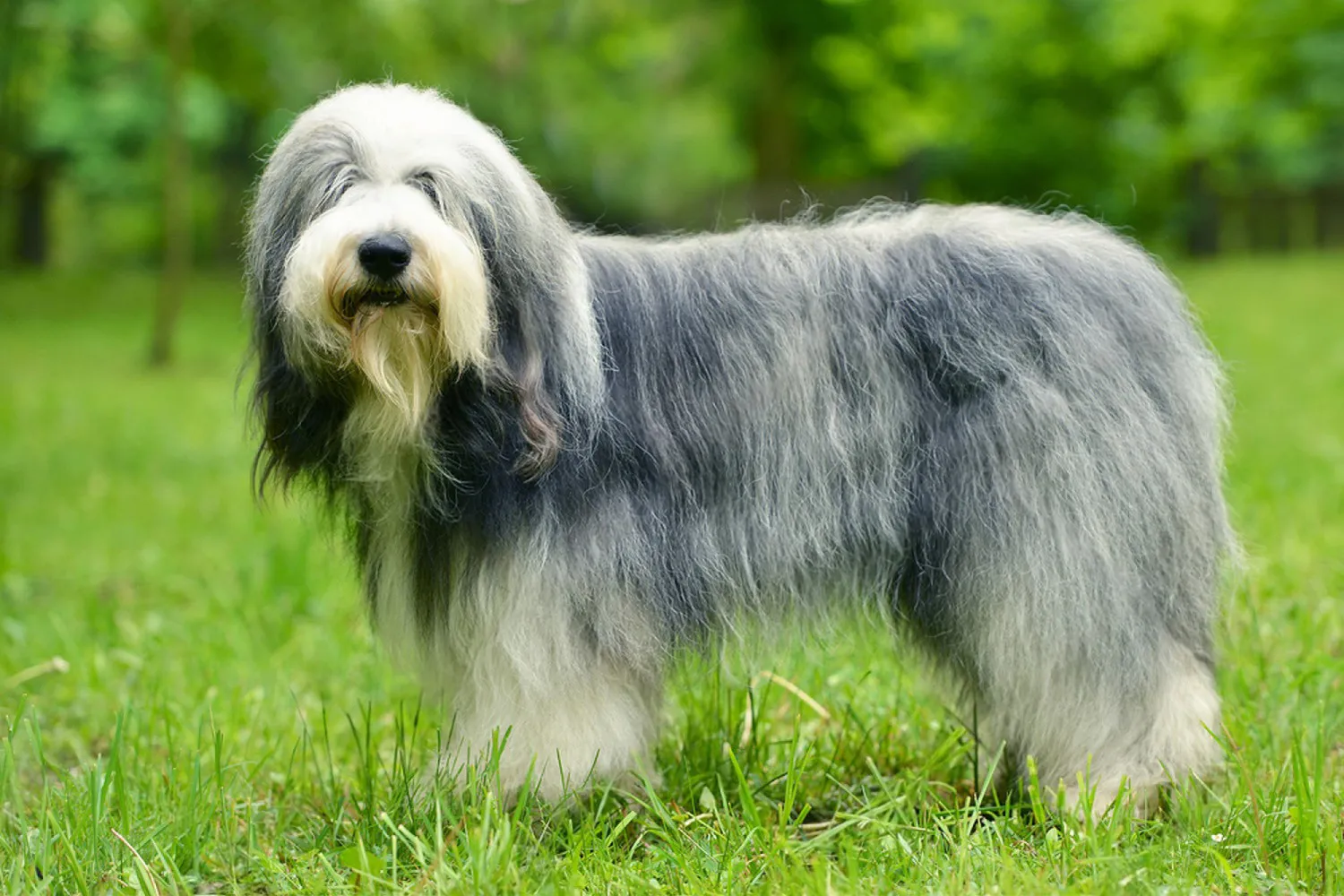
What is the average weight & height of an Old English Sheepdog?
Beneath all that glorious shaggy coat, the Old English Sheepdog is a solid, large dog. An adult typically stands around 61 cm at the shoulder (about 24 inches), and healthy weight usually falls between 27 and 45 kg (roughly 60 to 99 pounds). Males tend to land toward the heavier end of that range, while many females hover a bit lighter but the fluff can be deceiving. I once thought my neighbor’s OES had packed on winter pounds, only to learn it was just a fresh blowout from the groomer making him look like a walking cloud.
If you’re checking your own dog’s size, measure height at the withers (that ridge between the shoulder blades), not the top of the head those tousled bangs add a few “visual inches.” As for weight, I watch body shape more than the number on the scale: you should be able to feel ribs with light pressure and see a gentle waist when viewed from above. When my sheepdog friend hit a growth spurt, we dialed back treats, added a few extra sniffy walks, and the balance came right back.
Expect them to reach close to full height by around a year, then fill out muscle and chest over the next several months. Because they’re big and enthusiastic, a sturdy harness makes outings nicer for everyone, especially during the “I just saw a squirrel!” moments. Keep them moving, keep the coat brushed, and you’ll have a big, happy fluffball right in that healthy size sweet spot.
https://en.wikipedia.org/wiki/Old_English_Sheepdog
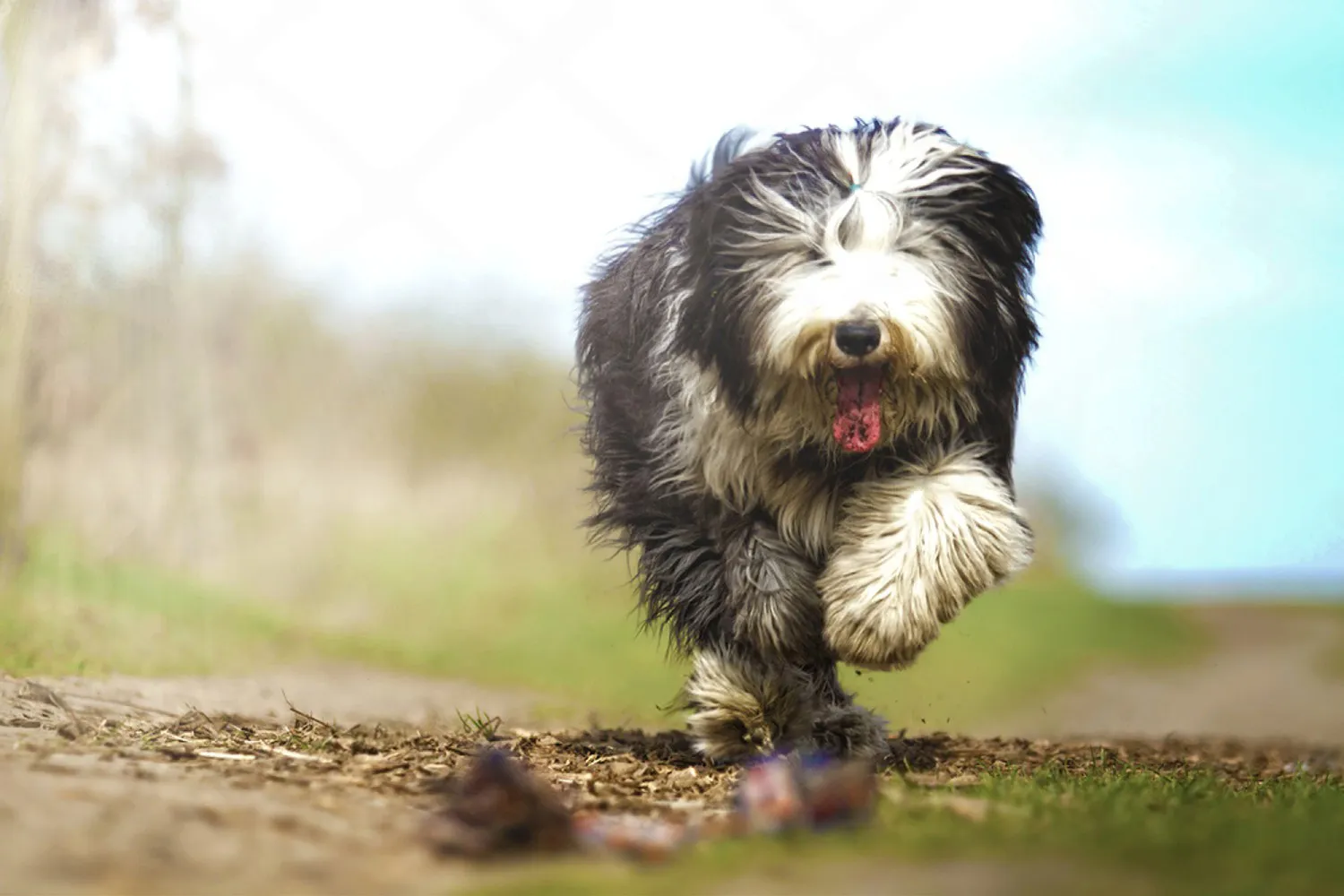
Are Old English Sheepdogs Easy to Train?
Smart as a whip and just as opinionated that’s the Old English Sheepdog in a nutshell. They pick up new cues quickly, especially if you start early. Puppy classes make a world of difference with this breed. I like to keep sessions short and playful, with plenty of treats and a silly voice. Five minutes of “sit, down, spin” can be more effective than a marathon session that ends in boredom and fluff flying everywhere. The trick is consistency: same words, same hand signals, and a calm follow through when they try to out charm you.
Stubbornness does crop up, usually right when you think you’ve nailed it. My friend’s OES learned “shake” in two tries but argued about coming inside every evening like a tiny, shaggy philosopher. When they dig their heels in, I switch to a game chase me, tug, or hide and seek with a squeaky toy then ask for the behavior again. A little fun resets the mood. Also, don’t underestimate their couch potato tendencies. They’ll happily sprawl for hours if you let them, then pretend they’ve forgotten what “heel” means when you finally head out. A quick sniffy walk or a few fetch reps before training helps them focus.
Their energy is real, and channeling it makes training easier. Many OES love dog sports agility, rally, even trick titles because they get to move, think, and make new furry friends. I once brought an OES to a herding clinic, and the moment the sheep shuffled, it was like a switch flipped: head down, eyes soft, body relaxed and purposeful. That instinct is still in there, and they often shine in herding trials where “driving” sheep is the main event. If you don’t have sheep (most of us don’t), try herding balls, scent games, or backyard obstacle courses.
Bottom line: they are easy to train when you keep it upbeat, start young, and meet their need for both exercise and brain work. Lead with praise, sprinkle in play, and you’ll have a well mannered fluffball who learns fast and actually enjoys the process.
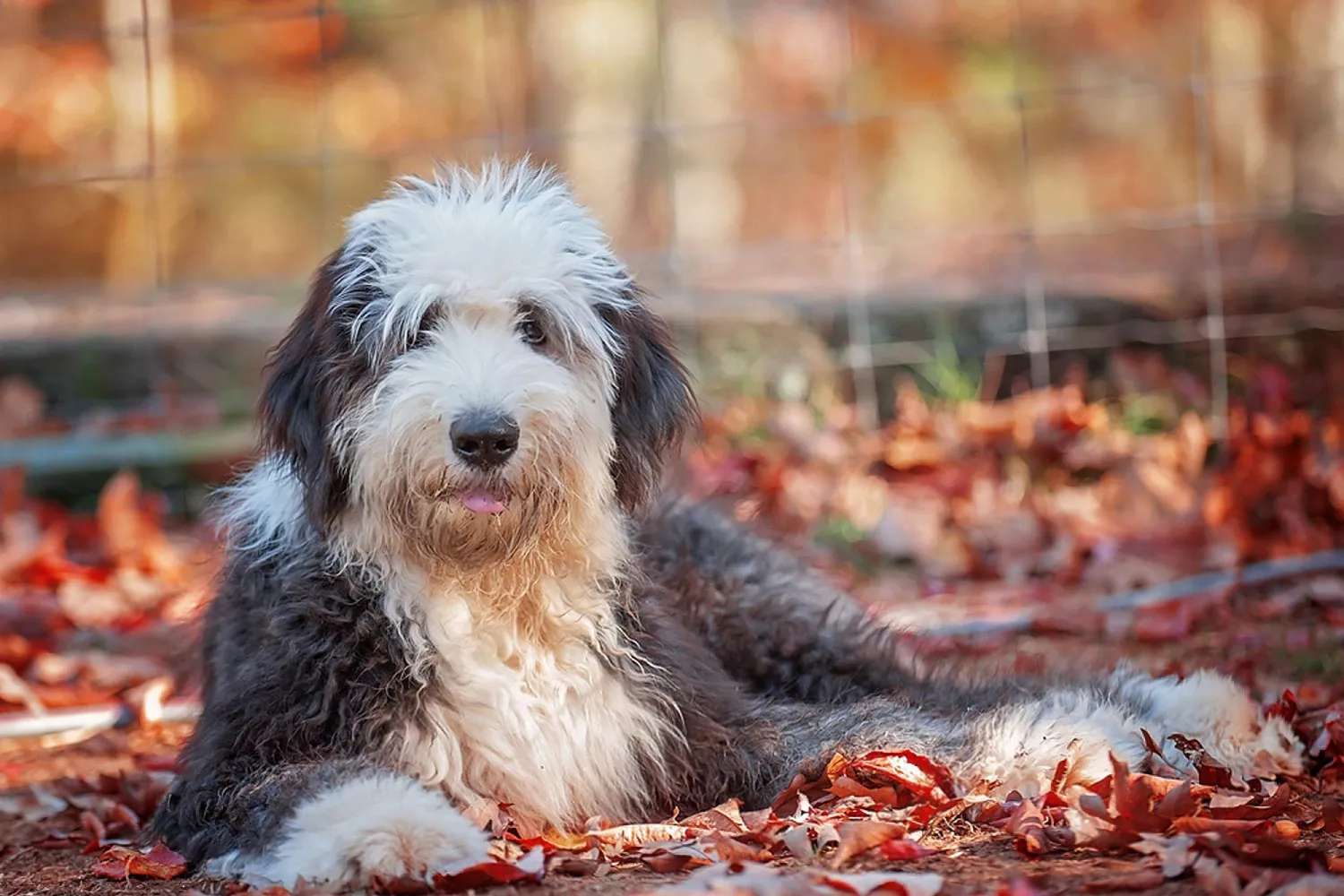
How Do Old English Sheepdogs Behave? Temperament and Personality
If you’ve ever watched an Old English Sheepdog do that bouncy, bear like trot down the street, you already know they’re full of beans. These dogs are playful and energetic, the kind of companions who’ll happily follow you on long walks and then ask for one more loop around the block. But what really keeps an OES content is using that big brain. A few rounds of a “find it” game with hidden treats, a puzzle feeder at breakfast, or a short training session in the afternoon can turn a restless sheepdog into a satisfied snoozer. I once taught my neighbor’s OES, Mabel, a little shell game with three cups she beamed with pride every time she got it right.
Socially, most Old English Sheepdogs are charming extroverts. Mine never misses a chance to say hello at the park big smile, full body wiggle, the whole welcoming committee. They’re usually friendly with other dogs, though their enthusiasm can be a lot in close quarters. Teaching polite greeting manners early four paws on the floor, quick sit before meeting new friends goes a long way.
For all that pep, they’re gentle souls at heart. Despite the size and the shag, they’re surprisingly sensitive and affectionate. After a good day of play, they’ll happily curl up on the sofa or sprawl like a shag rug by the fire. A breeder I met in California called them “couch comedians,” and it fits they’ll make you laugh, then snore softly at your feet like a little tractor.
Remember, this is a herding breed, so you may see a bit of that instinct come out nudging you toward the kitchen at dinner time, or trying to “gather” the kids during backyard chaos. I redirect with a quick game of fetch or a tug toy with rules, and it channels that energy beautifully.
One important note: Old English Sheepdogs bond deeply with their people, and separation anxiety isn’t uncommon. Build alone time skills gradually. Start with short, boring departures, leave a food stuffed toy, and skip the dramatic goodbyes. A white noise machine, a comfy safe space, and a midday dog walker helped mine learn that being alone isn’t scary. With steady routines, plenty of exercise, and regular mental workouts, an OES becomes what they’re meant to be: a big hearted, joyful clown with impeccable snuggle credentials.
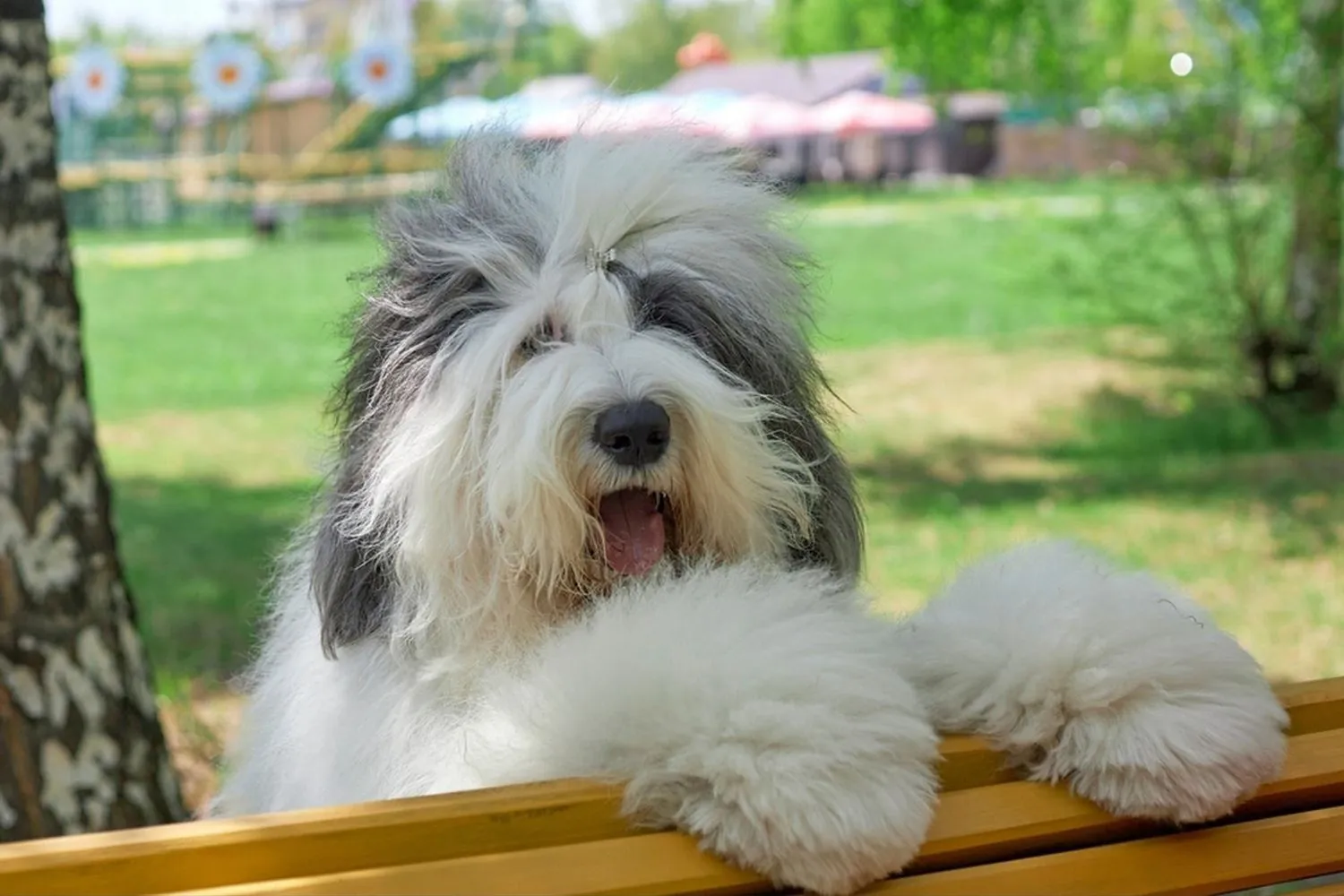
Do Old English Sheepdogs Have Common Health Issues?
Those big shaggy coats and sweet, goofy grins can make you forget that Old English Sheepdogs, like most purebreds, do have a few health quirks worth knowing about. The good news is that with smart breeding, regular checkups, and a bit of everyday know how, most issues can be managed so your bobtail buddy can live a long, happy life.
Hip dysplasia is one of the big ones. It’s a malformation of the hip joint that can lead to arthritis down the road. If you’re getting a puppy, ask for proof of hip testing from a recognized registry, and keep your dog lean and active with low impact exercise. I laid down rugs for my wobbly pawed youngster so he wouldn’t slip on hardwood, and it made a world of difference. As they age, things like joint friendly activities, ramps instead of stairs, and even physical therapy can keep them comfortable.
Eyes deserve special attention in this breed. Progressive retinal atrophy (PRA) and cataracts can affect vision and may lead to blindness. Annual exams with a veterinary ophthalmologist are well worth it, especially for breeding dogs who should be formally evaluated. I once noticed a friend’s OES hesitating in dim hallways that little clue pushed them to schedule an eye exam early. Cataracts can sometimes be surgically treated; PRA can’t be cured, but you can help a visually impaired dog thrive by keeping furniture consistent and using scent and texture cues around the home.
Bloat (gastric dilatation and volvulus, or GDV) is a life threatening emergency where the stomach twists. Know the signs: a swollen belly, unproductive retching, excessive drooling, and restlessness. If you see them, head to the vet immediately. Prevention helps: feed smaller, more frequent meals, use a slow feeder bowl, and skip hard exercise right before and after eating. I’ll never forget rushing my neighbor’s Sheepdog, Daisy, to the ER after she started dry heaving and pacing the quick response likely saved her life. For higher risk dogs, talk to your vet about a preventive gastropexy.
Some Old English Sheepdogs may experience hearing loss or deafness. Breeders can BAER test puppies, and if your dog is deaf or hard of hearing, training with hand signals, lights, and gentle vibration cues works beautifully. My friend’s OES sits, stays, and spins like a champ no voice needed. Just be extra mindful near roads and keep that leash clipped.
Heart conditions can pop up too, so keep up with yearly exams. Your vet may suggest additional screening if they hear a murmur or notice exercise intolerance or coughing. Responsible breeders screen breeding dogs, and a veterinary cardiologist can provide more detailed imaging if needed.
Hypothyroidism is another one to watch for. Signs can be subtle weight gain, low energy, thinning coat, or skin issues. A simple blood test catches it, and daily medication typically gets them back to their bright, bouncy selves. Breeding dogs should be tested for thyroid function as part of their health clearances.
Finally, exercise induced collapse can cause weakness or collapse after intense activity. It’s scary to see, but manageable with smart routines: avoid all out sprints in heat, build fitness gradually, and take breaks. Talk to your vet about genetic testing for breeding dogs and tailor your exercise plan. On hot afternoons, I trade fetch marathons for shaded sniff walks and puzzle games indoors.
If you’re shopping for a puppy, choose a breeder who health tests hips, eyes, thyroid, and relevant genetic conditions, and who’s open about results. For adult dogs, schedule regular checkups, learn the early warning signs, and keep a simple “health folder” with test results and vet notes. A little preparation goes a long way with these lovable, mop headed charmers.
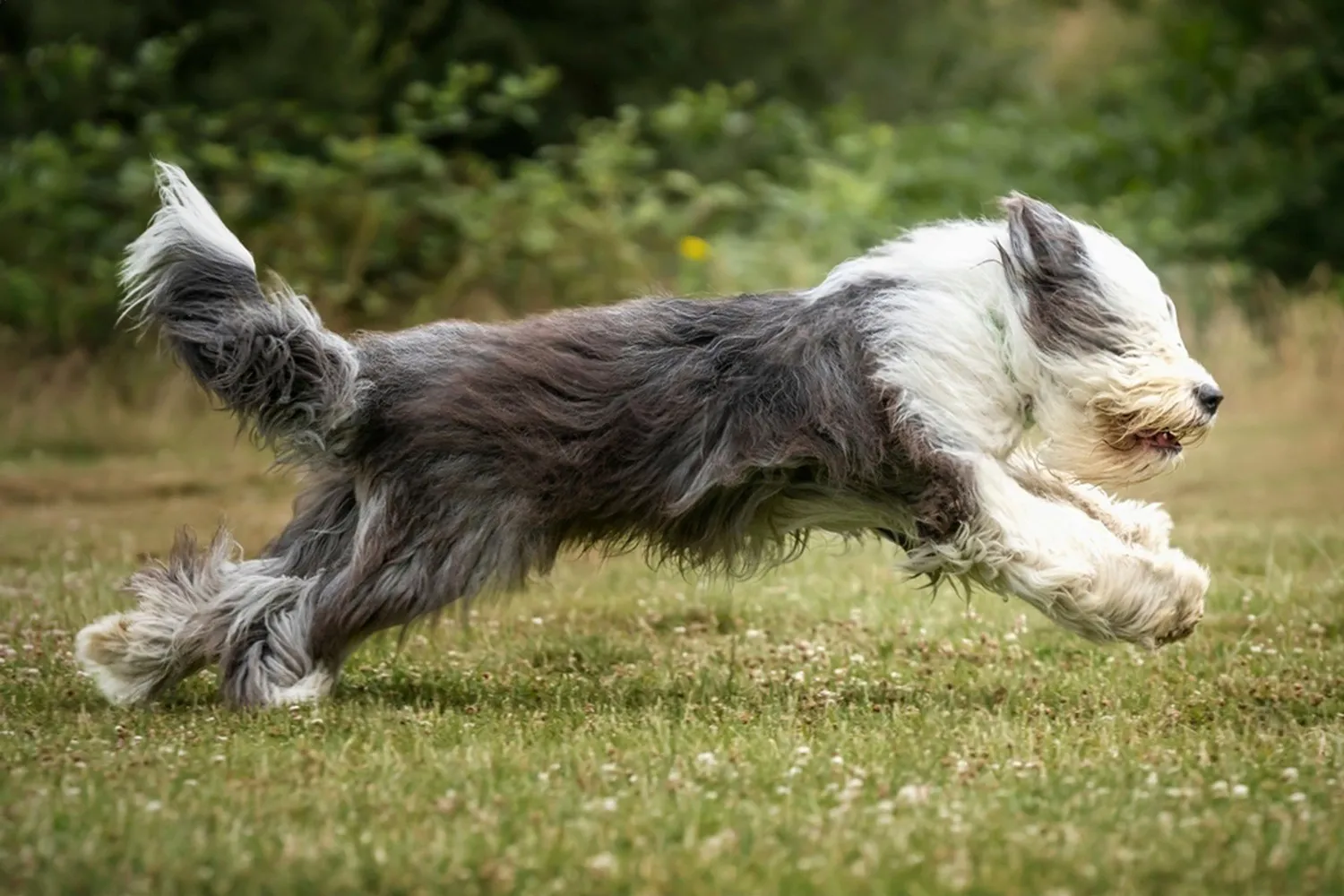
What is the lifespan of an Old English Sheepdog?
Most Old English Sheepdogs enjoy a solid 10 to 12 years, full of goofy grins, shaggy hugs, and happy adventures. They’re generally a healthy, sturdy breed for their size, and with good care many breeze comfortably into those double digits. My neighbor’s OES, Barnaby, even celebrated his 13th birthday with a slow wag and a carrot “cake,” which still makes me smile.
If you’re hoping to help yours reach the high end of that range, think simple, steady habits: a lean, balanced diet, daily walks rather than marathon runs, and regular vet checkups. Keep them at a healthy weight to protect those big joints, and don’t underestimate grooming brushing prevents skin issues that can sap their energy. I also swear by puzzle toys and short training sessions to keep their minds sharp. A little routine, a lot of love, and you’ll likely have many happy years with your fluffy sidekick.
How Much Should You Feed an Old English Sheepdog?
Old English Sheepdogs are big, shaggy charmers with appetites to match, but feeding them isn’t a “fill the bowl and hope for the best” situation. Work closely with your veterinarian or a canine nutritionist to nail down the right food and portions for your dog. These are large, fast growing pups, and they need enough high-quality nutrition to maintain size and strength without putting extra strain on bones and joints. I like to weigh meals on a small kitchen scale my portions were always a little generous when I eyeballed it.
One sneaky thing about this breed is that glorious coat. It can hide creeping weight gain. I learned that the hard way when an extra bath day revealed my “fluffy” dog was actually a bit too fluffy. Get in the habit of feeling for ribs (you should feel them with light pressure, not have to dig) and checking that there’s a slight waist. Monthly weigh ins help too many pet stores have scales you can use for a quick reality check.
When you’re choosing a diet, look for WSAVA guidance and an AAFCO statement showing the food is complete and balanced. If you’ve got a puppy, pick a large breed puppy formula. Those are designed to support steady growth and proper calcium and phosphorus levels, which is important for joints. Because Old English Sheepdogs are already prone to heart disease, it’s especially important to steer clear of grain free diets that have been linked to dilated cardiomyopathy in some dogs. If you’re ever unsure, your vet is the best sounding board.
Most adult OES do well on two meals a day, but the exact amount depends on the specific food, your dog’s size, and how active they are. A couch cuddler needs less than a daily hiking buddy. Treats are fine in moderation especially for training but I keep them under about 10% of daily calories. I often use part of the regular kibble as rewards so I’m not overdoing it. Skip the table scraps; they can be unhealthy and, trust me, once your dog realizes begging works, you’ll have a 70-pound mop pleading at every meal. A friend of mine gave in “just once,” and it took months to unteach that habit.
Like many large, deep chested breeds, Old English Sheepdogs can be at risk for bloat (gastric dilatation and volvulus, or GDV). Smaller, more frequent meals and encouraging a slower eating pace can help slow feeder bowls, snuffle mats, or a simple puzzle feeder work wonders for gulpers. I also keep things calm around mealtimes and avoid vigorous exercise right before or right after eating. Ask your vet about other preventive strategies and the warning signs so you know when to seek immediate care.
In short: pick a complete and balanced food, measure it consistently, feed on a regular schedule, and keep a close eye on body condition under all that fluff. A little routine and a lot of love goes a long way with these gentle giants.
Old English Sheepdog FAQs
Are Old English Sheepdogs rare?
A few years ago, in 2020, the breed landed on watchlists for extinction because interest had been slipping. Since then, there’s been a real uptick in puppy registrations, so the “endangered” worry has eased. You still don’t see an Old English Sheepdog on every corner like you do Labs, but they’re out and about. When I walk mine, people still stop to ask questions half the fun is watching strangers grin at that shaggy bear of a dog. If you’re looking for a puppy, expect waitlists with reputable breeders, and check breed clubs and rescues too; I’ve met some wonderful OES who came home as adults.
Should I shave my Old English Sheepdog?
You can, but you don’t have to. Their double coat is like nature’s thermostat, helping with insulation in both cool and warm weather. If you do choose a shorter clip for easier maintenance, I like leaving a couple of inches rather than a down to the skin shave it protects from sunburn and helps the coat do its job. Day to day, brushing is the real lifesaver. A slicker brush and steel comb a few times a week keeps mats from setting up camp behind the ears, in the armpits, and along the ruff. I book a professional groom every 6-8 weeks and bring high value treats so the salon feels like a spa day, not a chore.
Are Old English Sheepdogs hypoallergenic dogs?
No dog is completely hypoallergenic, and OES are generally not a good match for allergy prone households. Their long, profuse coats carry dander and they shed regularly. If allergies are mild and your heart is set, spend time with an adult OES first to see how you react. Practical helps like HEPA air purifiers, frequent vacuuming, washable throws on the couch, and regular baths can make a dent but for many people, it’s still too much. Better to know before you fall for a pair of shaggy eyebrows.
When should an Old English Sheepdog be neutered?
Traditionally, 6 months was the go to recommendation. These days, many vets suggest waiting until large breed dogs are fully grown often around 12 to 18 months or later to help reduce the risk of certain bone and joint issues. The right timing can vary with sex, size, and lifestyle, so talk it through with your veterinarian for advice tailored to your dog. I plan ahead for the recovery: a quiet space, a cone that actually fits, pain meds on schedule, and puzzle toys to burn mental energy while activity is limited. Ask your vet about pre op bloodwork and the best timing around vaccinations, too having a plan makes the whole process smoother for everyone.
Disclaimer:
This article is for informational purposes only and doesn’t replace professional veterinary or training advice. Always consult a certified vet or dog trainer for guidance specific to your pup.
